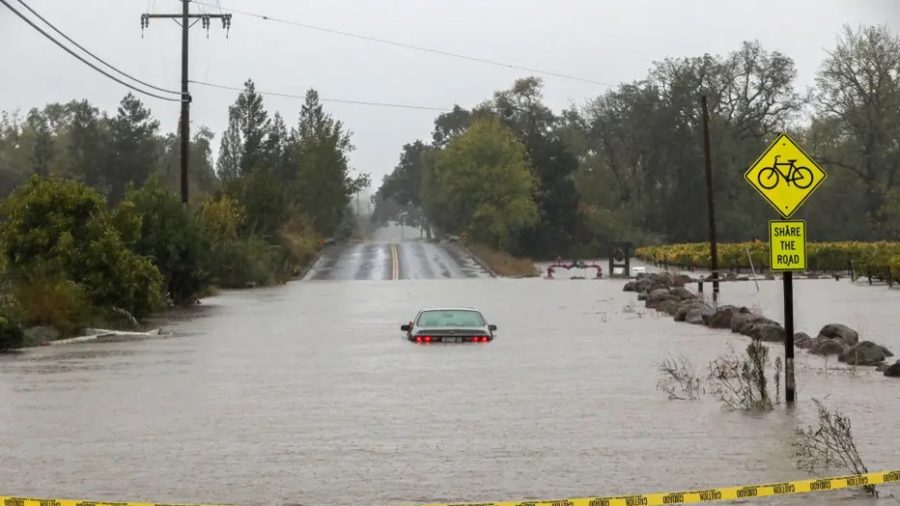The California ARkStorm: A Generational Tribulation
Megafloods in California pose a devastating threat.
February 23, 2023
These past 2 weeks have flooded us with uprisen chaos of storm and destruction stretching across California – literally. Various areas of Orange County, Los Angeles County, San Diego, the San Francisco Bay area, and other coastal communities dealt with flooded streets and heavy downpour, all due to a single storm that revisits California every generation: the ARkStorm. ARk stands for “an atmospheric river (“AR”) that carries precipitation levels expected to occur once every 1,000 years (“k”).” A month’s worth of rain, fed by a conveyor belt of tropical moisture, drops up to 10 feet of water on California in an ARkStorm scenario. The ARkStorm gathers heat and moisture from the tropical Pacific, generating a succession of atmospheric rivers of hurricane-like strength that crash against the West Coast over the course of several weeks.
While this storm was novel to many, the ARkStorm has actually historically caused severe damage. The Great Flood of 1861-1862 was the single greatest flood in California, Nevada, and Oregon’s documented history. The destruction was so severe that it cost 100 million dollars in property damage and took about 4,000 lives. The 43-day atmospheric-river storm even bankrupted California as it suffered the heaviest brunt of the catastrophe. Moreover, state employees were unable to be paid for 18 months, and because the storm wiped out 25% of the state’s cattle, inflation caused the price of eggs to rise to 3 dollars per dozen, which is equivalent to 79 modern dollars.
California has seen more than its fair share of prolonged drought, water shortages, and extreme wildfires in recent years. Consequently, many have assumed the solution is one that is not out of reach: the megafloods. Water management authorities in California are scrambling to collect as much overflow as possible from the state’s weeks-long atmospheric river storms in an effort to ease water supply worries caused by the current extreme drought. While the constant rainfall has aided the augmented reservoirs, it has not been sufficient to end the state’s worst drought in 1,200 years, which has impacted agricultural and grocery costs. “Just because we’ve had this rain doesn’t mean we’ve eliminated the drought,” said Cindy Palmer with the National Weather Service’s San Francisco Bay area office. Although the elimination of the drought is not in view, the rain has alleviated much of the state as 71% of the state was in “severe to extreme drought conditions” prior to the storms, but now that number has fallen to 46%.
“These storms will probably look worse in the future because of how terribly we treat our environment.” — Lauren Kam (9)
The attention of California has been drastically caught by floods instead of droughts. Future ARkStorms are bound to happen; in fact, the likelihood of this massive atmospheric river storm is a certain visitor planning to return every generation. Climate change has even been an impactful factor added into the ARkStorm likelihood equation. The elemental phenomena has already caused extreme precipitation in California, and evidence suggests the enhancement of these megastorms in the future. Lauren Kam (9) speculates, “These storms will probably look worse in the future because of how terribly we treat our environment.”
To combat these megastorms, flood control reservoirs are already in the planning to reduce the effects of the atmospheric river storms.





















